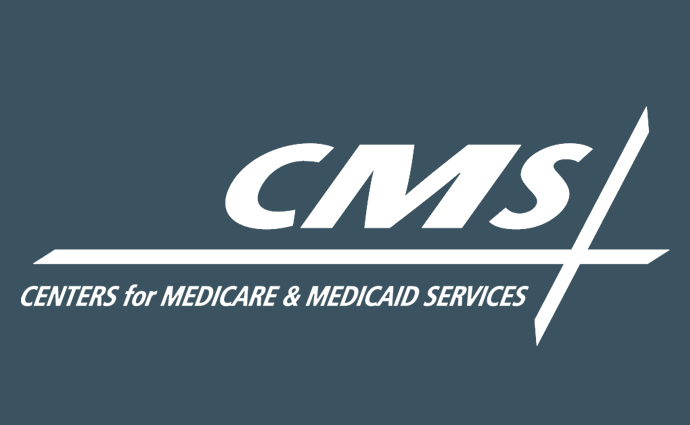CMS Seeks Extension for Comprehensive Care for Joint Replacement
A rule proposed would extend the Comprehensive Care for Joint Replacement for another 3 years and make changes to the bundled payments for certain episodes, including new outpatient procedures.

Source: Centers for Medicare & Medicaid Services
- The Comprehensive Care for Joint Replacement (CJR) Model is slated to sunset by the end of the year, but a recently proposed rule from CMS would extend the bundled payment program for another three years.
Proposed late last week, the rule would allow certain hospitals in the program to continue receiving retrospective bundled payments for lower extremity joint replacements through Dec. 31, 2023. The rule would also implement changes to the model, including adding outpatient hip and knee replacements into the episode of care definition, target price calculations, and the reconciliation process.
The extension of the popular bundled payment program in Medicare will help CMS to “further assess the cost & quality impact to lower joint replacement procedures,” the CMS Innovation Center tweeted on Feb. 20, 2020.
Since the CJR Model launched in April 2016, Medicare has seen episode payments for lower extremity joint replacements included in the bundles decrease by 3.7 percent, representing $146.3 million in gross savings.
CMS also distributed $128.9 million in reconciliation payments to hospitals in the first two years of the model, bringing net savings to Medicare to about $17.4 million of 0.5 percent of baseline payments, the federal agency stated in the evaluation report.
A study published in the January 2020 edition of Health Affairs, which included the CJR Model in its analysis, found that bundled payment programs maintain or improve care quality while lowering costs for hip and knee replacements.
Researchers from the Center for Health Reform in Texas conducted a systematic review of bundled payment programs administered by CMS. They found that the programs are effective for improving the value of lower extremity joint replacements. However, the programs have yet to demonstrate similar benefits for other clinical episodes, including medical conditions. The programs were also not associated with cost savings for conditions with higher patient complexity, including spinal fusion procedures.
CMS’ own analysis of its bundled payment programs has also shown promising results.
A report published on the CJR Model’s webpage in January 2020 shows that the CJR Model and Models 2 and 3 of the Bundled Payments for Care Improvement (BPCI) – a bundled payment program with a wider range of clinical episodes – reduced grow Medicare spending without having an adverse effect on quality of care. The savings stemmed from efficiency gains as care shifted from the institutional post-acute care setting toward the home, the agency reported.
However, neither program has resulted in net savings to Medicare thus far, CMS found. These findings stress “the fact that setting accurate prospective target prices in the context of a rapidly shifting and unpredictable marketplace is challenging,” the agency stated.
To build on the successes of the CJR Model while also encouraging net Medicare savings, CMS is now proposing changes to the CJR target price calculation.
If finalized, the rule would change the basis for the target price from three years of claims data to the most recent one year of claims data. CMS also proposed to:
- Remove the national update factor and twice yearly update to the target prices that account for the prospective payment system and fee schedule updates
- Eliminate anchor factors and weights
- Incorporate additional risk adjustment to the target pricing
- Change the high episode spending cap calculation methodology
Other notable changes to the CJR Model proposed in the Feb. 24 rule included:
- Change the definition of a CJR episode to include outpatient knee and hip replacements
- Shift from two reconciliation periods (conducted 2 and 14 months after the close of each performance year) to one reconciliation period that would be conducted 6 months after the close of each performance year
- Add an additional episode-level risk adjustment beyond fracture status so target prices will be further adjusted at the episode level based on the beneficiary’s age and HCC condition count
- Modify the high episode spending cap calculation methodology used at reconciliation, to add a retrospective trend adjustment factor that will capture changes in Medicare program payment updates and care delivery patterns
- Alter the quality (effective or applicable) discount factors applicable at reconciliation to participants with excellent and good quality scores to better identify high-quality care
- Make changes to align the beneficiary notification, gainsharing caps, appeals process, and waiver sections with the proposed model extension and the proposed changes modifications to episode definition
Industry groups have long supported the CJR Model and other bundled payment programs administered by CMS. However, the American Hospital Association (AHA) expressed concerns on its website that the extension of the model would only apply to hospitals in the 34 metropolitans statistical areas in which participation is mandatory.
Hospitals participating in the 33 areas in which the model is voluntary, as well as all low-volume and rural hospitals in the model, would still see the model end by the end of the year, which challenges the model’s use a “pathway to potentially improve care coordination and efficiency,” the AHA pointed out.
Comments on the proposed rule are due no later than 5 P.M. EST on April 24, 2020.
